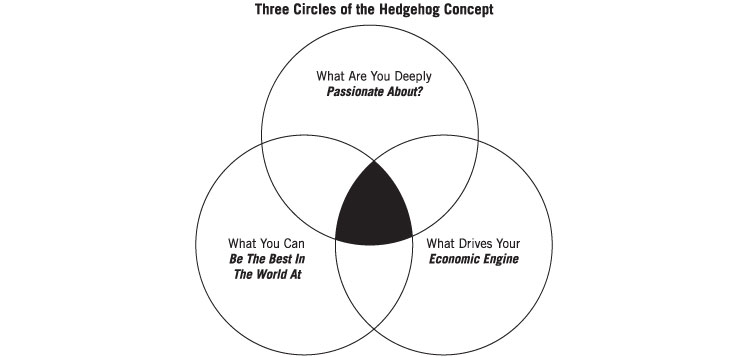Speed is everything. It’s a classic trope in business, and in a lot of ways it’s still very much true. There’s undeniable benefit in entering a market earlier rather than later - but as history tells us, a strong foundation is a better indicator of success.
Take everyone’s favorite pending case study right now: Spotify. Despite a massive head start in the world of music streaming and an active user base approaching 200 million, you’d be hard pressed to find anyone entirely confident in their continued growth thanks to Apple Music.
There are a number of ways in which Spotify is differentiated from Apple Music - original content, public playlists, cross-device controls, integration with Genius - but which of these are being used to position Spotify in a way that can overcome Apple’s monstrous hardware advantage?
Clearly no one would call Spotify a “failure” by any stretch, and hardly anyone can compete with Apple, but the point still holds - as Spotify enters a vital growth stage following their non-traditional IPO, have they formed the right foundation to build on?
That’s where answers to the following questions can help.
The Questions That Lead to Sustainable Growth
Businesses that come to us in preparation for their own growth stages are often (understandably) anxious, looking to dive head-first into important marketing decisions built on small sample size assumptions. This is where it becomes our job to provide direction and resist making hasty decisions.
It’s critically important that before our marketing begins, we take a step back to ensure the core business elements are in place to develop a strategic marketing plan around.
Our goal isn’t a one-time surge in purchases through some growth hacking tactic - it’s sustainable growth.
Here are the key questions we’ll ask:
What is Your Business Model?
At its core, your business model describes how your business creates and delivers value for your audience. If you’re sitting there thinking of how to summarize the way your business provides value and find the answer getting complicated - let’s simplify.

A good way of thinking of this is something known as the Hedgehog Concept. The idea here is that there are two types of businesses: those that diffuse their offerings to become good at a number of things (Foxes, i.e. Spotify and their miscellaneous add ons) and those that are great at one thing (Hedgehogs, i.e. Apple and its hardware advantage).
We look for that one thing, and in order to do so, we need to fill in that venn diagram with answers to these questions:
- What is your financial north star?
- What are you passionate about?
- What can you be the best (in the world) at?
With clear and concise answers to these questions, we can get a good sense of a strong business foundation. As an added benefit, they also help to answer...
What is Your Brand Positioning?
Your brand positioning is how you communicate the value you deliver with your business model. When it comes to shaping this narrative, your answers to questions two and three of the Hedgehog Concept become paramount.
The passion and core capability of your business are the best tools for defining the public perception of your brand, so it’s important to hammer these out for the sake of any marketing messaging. The trick then becomes lining this messaging up with the answer to our next question...
Who is Your Target Audience?
Do you know who the “right” customer for your business is? Well, we now know what value you deliver and how you communicate this value, so step three is a matter of lining these up with particular personas.
I’m sure it’s not the first time you’ve heard this, but just to reiterate, the best method of accomplishing this is talking to customers. What are their pain points? What is their decision making process? Where can they be found? Finding answers to these questions (and many others) is an enormous piece of what Brolik does for our clients.
Remember though, while speed isn’t everything, it’s not nothing either right? Finding your customers shouldn’t become an extensive, costly process - and it doesn’t have to be.
With your customer profiles now defined, it’s time to look at...
Is There a Product-Market Fit?
Does what you’re selling deliver on the promise that your brand messaging communicates? And does it provide value to your target audience? At the end of the day, the task of doing great marketing is made much easier by a great product, so these are important questions to answer.
At this stage, we have enough information to build a strong marketing campaign. But what happens when the leads start rolling in? That’s when we ask...
Can Your Sales Process Deliver?
From a marketing perspective, an efficient sales process is critical for two reasons:
- You need a proven sales team that can follow through on your brand positioning and the promise that it implies. This is a big part of your ability to turn marketing generated leads into sales.
- An essential, but often overlooked, piece of the marketing puzzle is quality tracking. You need visibility all throughout the sales process and have an effective way of communicating the findings throughout between your marketing and sales teams. We like refer to this as “Closing the Loop”.
It should be clear now how the above groundwork is necessary for a strategic marketing plan to take hold. By taking the time to ensure that all of these key components of your business are hammered out, you’ve laid the foundation for an effective and iterative marketing process that can save money and return valuable learnings.
Take it from us that this can mean the difference between short term gains and continued growth.
